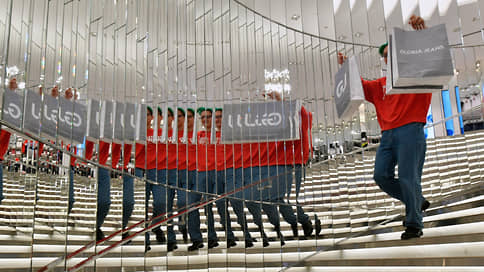Rosstat data explained the continued growth in consumption
[ad_1]

As follows from the report on the socio-economic situation in the Russian Federation published on Wednesday by Rosstat, at the end of October, official statistics recorded an unexpectedly rapid increase in wages in market sectors of the economy – by 17.2% year-on-year. Analysts believe that this may be explained by the advanced indexation of wages by employers in the face of a shortage of personnel. The increase became one of the key factors supporting the growth of household consumption in November-December. However, such a surge, analysts are convinced, will be short-lived.
Rosstat fixes a noticeable acceleration in the growth rate of nominal wages – in October they increased by 17.2% after 13.6% in September in year-on-year terms. Real wages in October increased in annual terms by 9.9% against 7.2% in September.
General Director of the All-Russian Research Institute of Labor Dmitry Platygin cites tension in the labor market in the form of historically low unemployment (2.9% in October and November) as the reason for such rapid growth. “During this period, companies formulate a budget for the next year. Many employers are trying to ensure that they meet the need for workers for the next year even before the New Year’s Eve,” he said, recalling that increasing wages is one of the tools for retaining qualified employees.
Meanwhile, Igor Polyakov from the Center for Macroeconomic Analysis and Short-Term Forecasting (TSMAKP), calling the October jump in wages unusual, is convinced that its reason is the postponement of the traditional January indexation to October due to rising inflation and the expected increase in the minimum wage. He notes that the main increase in nominal wages is in market sectors: oil and gas production (by 62.6% in October in annual terms), processing (19.7%), construction (19.5%) and agriculture ( 17.4%). As a result, according to CMAKP estimates, the growth of real wages, taking into account seasonality, in October compared to September accelerated to 1.8% against an average monthly rate of 0.1% in the third and 1.1% in the second quarter of 2023.
The growth of “proxy” real income (salaries, pensions and interest on ruble deposits) amounted to 2%, which allows us to expect favorable income dynamics in the fourth quarter.
Such a rapid increase in wages in October against the backdrop of increasing inflation expectations and a consistently high level of bank consumer lending (plus 1% in November versus 1.1% in October) supported consumption growth (see “Kommersant” dated December 22). The increase in lending and consumption, as noted by the Bank of Russia, was enhanced by the seasonal factor (trade promotions, preparations for the New Year holidays).
As a result, according to the Ministry of Economy, the total turnover of retail trade, public catering and paid services to the population (volume of consumer demand) in November increased by 8.9% in real annual terms against an increase of 10.8% a month earlier (plus 4% compared to November 2021 and plus 5.7% for 11 months of this year), which coincided with TsMAKP estimates. Excluding seasonality, the growth rate for November was 0.6% versus an increase of 1.1% a month earlier.
In December, increased spending by the population, judging by indirect indicators, remained (see “Kommersant” dated December 22). However, “Russians are gradually realizing that current bank rates, reaching 16% and higher for the year, are a unique opportunity not only to save money from inflation, but also to “recapture” those losses in the real purchasing power of ruble savings that occurred in the second half this year due to a price jump,” analysts of the Telegram channel note MMI.
The volume of household funds in banks in November increased by 679 billion rubles, and loans to households increased by 518 billion rubles. “That is, in general, the interest rate channel (among the population) is starting to work in the direction of reducing demand, which is positive for both the ruble and the inflation picture as a whole,” analysts record. “We believe that in the coming months the effect of tightening monetary policy will begin to manifest itself more clearly, and the balance of factors will nevertheless shift towards neutralizing or weakening consumption,” agrees Stanislav Murashov from Raiffeisenbank. According to CMAKP, the overall demand for labor in the economy (employed plus the number of vacancies) is stable for the third month in a row, which also indicates the beginning of a cooling in economic activity.
[ad_2]
Source link






